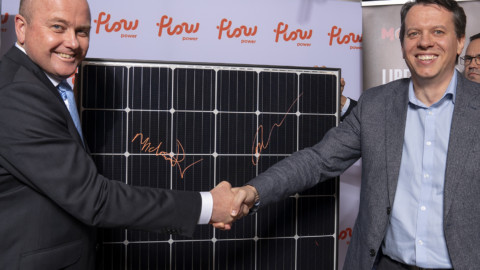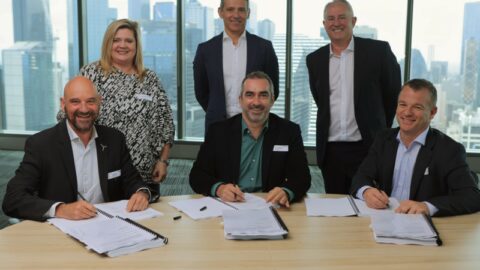The New South Wales Government has released its accepted recommendations from the Electricity Supply and Reliability Check Up to ensure the state can secure a reliable supply of clean and affordable renewable energy, and also details the state’s plan for the closure date of the Eraring Power Station.
The May 2023 Electricity Supply and Reliability Check Up, conducted by Cameron O’Reilly from Marsden Jacob Associates, committed to a whole-of-government effort to deliver the energy transition for New South Wales households, businesses and communities and made 54 recommendations to keep the Electricity Infrastructure Roadmap on track.
The State Government has accepted 50 recommendations – 44 in full, three in part and three are already underway or complete.
The government will take action in three key areas:
- The Electricity Infrastructure Roadmap has been endorsed as a strategic priority of the government – there will be a whole-of-government effort to make sure that as coal-fired power retires, New South Wales households and businesses have enough renewable energy, transmission and storage to replace it as quickly as possible
- A new Energy Security Target Monitor will actively inspect the plans of New South Wales’ remaining private coal-fired power stations as they approach retirement to ensure ongoing reliability at the lowest cost
- The New South Wales Government will streamline renewables approvals in the planning system as well as enhance and coordinate community benefit sharing, unlocking opportunities to connect new renewables to the existing grid outside Renewable Energy Zones (REZs). A Consumer Energy Strategy will be developed to unleash the potential of households and businesses to further embrace small-scale renewables like solar in the short-term, without shifting focus and momentum from the delivery of large-scale projects.
Eraring
The State Government will engage with Origin on its plans for the Eraring Power Station, which will be the next major generator in the state scheduled to shut down. At the same time the government is set to pursue all alternative solutions to deliver the renewable generation, transmission and storage solutions that New South Wales needs.
Eraring, a major generator, is considered by the State Government to be a profitable asset and has a decade left of its technical life whilst Origin Energy has a very large existing retail customer base it cannot yet supply without Eraring.
The Electricity Supply and Reliability Check Up Report made clear that the interests of New South Wales and Origin Energy are aligned in key respects:
- Meeting emissions reduction targets by 2030
- Shielding New South Wales customers from volatile global energy prices
- Accelerating private investment in new renewables, storage and network infrastructure.
Despite a concerted effort from the previous and current New South Wales Government, the Australian Energy Market Operator’s (AEMO) latest advice indicates consumers face reliability risks should new network and firming infrastructure not arrive on time.
In the response, the State Government discussed that if Origin were to temporarily extend its timeline for phasing out Eraring, it could provide the state with a buffer to manage these reliability risks. However, this is only one solution and the government has other options to mitigate these risks if required.
Taking into account that the state has a privatised energy market, the State Government will also collaborate with Origin Energy to clarify its plans for the major generator.
The State Government will also enhance its energy security monitoring and accelerate the delivery of new firming infrastructure before the end of 2025 in partnership with the Commonwealth’s Capacity Investment Scheme.
The Check Up report also found that New South Wales will require long term storage which may need to come from a more diverse technology mix than envisaged by the former State Government in 2020 when the Roadmap was released, stating it would secure private investment in 12GW of new renewable energy generation and 2GW of long-duration storage by 2030, and coordinate five new REZs across the state.
State Minister for Energy, Penny Sharpe, said, “New South Wales has no time to waste as coal-fired power retires and needs to be replaced by renewable energy generation, transmission and storage.”
“The check up by Cameron O’Reilly and his team is a clear sighted assessment that has kicked the tires of energy policy in New South Wales.
“It provides the practical and achievable next steps to rescue the Electricity Infrastructure Roadmap, and let New South Wales get on with it,” Ms Sharpe said.
The whole-of-government approach will also address housing, transport, skills and workforce and supply constraints in the Renewable Energy Zones.
The Energy Corporation of NSW (EnergyCo) will continue as the lead agency to deliver the REZs that will power New South Wales into the future. EnergyCo will be enhanced with a statement of priorities and a reformed governance framework.
Industry response
Endeavour Energy has recognised the report findings, which stated distribution is a key solution to the New South Wales energy transition while new transmissions are built.
Endeavour Energy’s CEO, Guy Chalkley, said the report sets out clear actions to deliver a smarter, cleaner, more affordable and efficient energy system by unlocking renewable energy resources that already exist across its massive electricity grid.
“We are at a critical point in the energy transition, with more customers working flexibly who depend on safe, reliable and affordable electricity to power their work and lifestyles.
“Our customers have told us they want us to act now for an accelerated transition. But that is least cost, not at any cost. They are already leading the energy transition with record investments in renewables technologies.
“One in four homes in our network now have rooftop solar. We expect this to grow to one in two by 2034 while battery storage is predicted to increase to one in three homes. And over the next 20 years, electric vehicle ownership is set to grow to 91 per cent,” Mr Chalkley said.
“At the same time, we are experiencing unprecedented growth in Greater Western Sydney – about 40 per cent higher than the rest of Sydney. Large businesses are flooding into the area as the opening of Western Sydney’s International Airport nears. Energy security and affordability is critical for them.
“There is enormous potential to unlock the aggregated power of customer energy resources already connected to our distribution network, utilised locally, to contribute to NSW’s energy security and supply.”
The Australian Energy Council said the report to the New South Wales Government illustrates the extreme challenges being thrown up by the energy market transition and supports the recommendations that were made.
Australian Energy Council Chief Executive, Sarah McNamara, said, “This transition was always going to face significant hurdles given the sheer scale and speed of the grid renovation underway.
“The electricity sector has been working cooperatively towards the decarbonisation of the grid for many years. This report flags the importance of getting the phase out of old plants and phase in replacement generation right. Clearly there are consequences for reliability and affordability if that balance is not achieved.
“Our national electricity grid is a delicate and complex piece of infrastructure that touches every home and business across the eastern states.
“Its decarbonisation requires time and the flexibility to be able to address issues as they arise.
“We support the sensible recommendations announced today and agree that the government must continue to engage with plant operators to avoid the kinds of potential supply shortfalls flagged by recent market assessments. It is responsible to consider all options, including the ongoing role of gas-powered generation in our grid,” Ms McNamara said.
“We also agree with the New South Wales Government’s assessment that there is a critical need to improve the community’s awareness and understanding of the energy transition. This must be a cooperative effort between governments and market participants.”
On the other hand, Climate Council CEO, Amanda McKenzie said that if Origin and the government decide to extend Eraring and its phaseout, it would be a ‘disaster’.
“It will cost taxpayers enormously, continue to pollute and encourage every other ageing coal station to hold out for a handout.
“The government has a range of other excellent alternatives, from more rooftop solar, community batteries and fast tracking the huge pipeline of renewable power ready to come into the system.
“Investing in renewables will power the state for a generation, while money into fossil fuels will go up in smoke,” Ms McKenzie said.
















